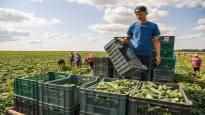Ukraine is one of the world’s largest wheat exporters. Grain is shipped through Black Sea ports. A conflict in the sea would severely hamper transport.
Ukraine is one of the world’s largest exporters of wheat. If a war broke out in Ukraine, it could raise the price of food and grain around the world, says a natural researcher at the Natural Resources Center Luke Csaba Jansik. Read Jansik’s answers to the essential questions here.
What is Ukraine’s position in world trade?
Ukraine is a very important exporter of agricultural raw materials.
– The country is the fifth largest exporter of wheat and the third largest exporter of corn in the world. The target countries are the Middle East, North Africa and Asia, Jansik explains.
What effects would war have?
One key fear is the difficulty of logistics routes in the Black Sea and delays in the delivery of goods.
Both Russia and Ukraine have export ports in the Black Sea, Jansik recalls.
– Russia is the world’s largest exporter of wheat and the market is partly in the same areas. If supplies become more difficult in the countries of destination, there is pressure to buy grain from the EU and the United States.
How would the war in Ukraine affect world markets?
The price of food would rise further. It is challenging, especially for developing countries.
According to Jansik, war would raise the price of food. This would penalize North Africa in particular, which has been hit by record drought.
– Drought is also affecting important production areas such as Argentina. Supply is falling and demand is rising, Jansik says.
Wheat futures prices are already at the 2010 level. At that time, the yields in Russia and Ukraine were short. The price of food rose to a record level around the world.
– In developing countries, more money is spent on food than in developed countries. The reaction to rising food prices is much more sensitive.
He recalls that there are no signs of parity between the Arab Spring and the crisis in Ukraine.
What is the EU’s trade relationship with Ukraine in terms of food exports?
Raw materials are imported into the EU from Ukraine. They are also used in animal feed.
Ukraine exports more agricultural products to the EU than it imports.
Ukraine imports raw materials into the EU, such as oilseed rape, sunflower and maize, and processed oil and oilseeds from processed products. Processed food is exported from the EU to Ukraine.
– Ukraine imports between € 5 billion and € 7 billion worth of agricultural products and foodstuffs into the EU each year. Significantly less is being exported, around EUR 2-3 billion.
Specialist Jansik recalls that Ukrainian raw materials such as grain and oilseeds are used in feed.
– It’s not just about prices, it’s about options like soy. The EU has long sought to improve the self-sufficiency of oilseeds.
Soybeans have been imported from the United States, Brazil and Argentina, where production is not fully in line with EU environmental standards or is genetically modified.
– If you can’t get cheap raw material from Ukraine, you have to look elsewhere.
The following sources have also been used in the story: Politico, Foreign Policy
